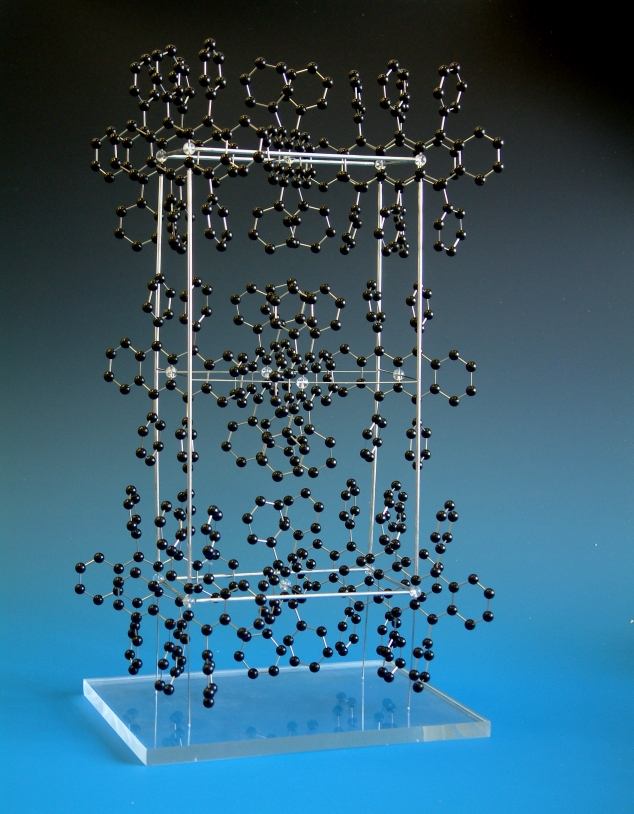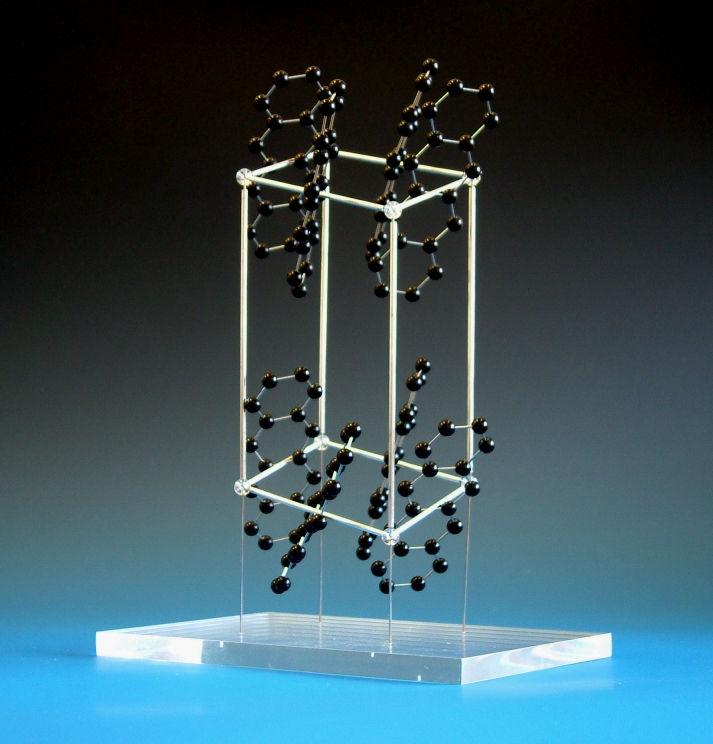
Crystal structure model of Rubrene with highlighted unit cell
Large model of diamond made with 50mm wooden balls and aluminium rods, with the cubic unit cell included.

Crystal structure model of Rubrene with highlighted unit cell
Large model of diamond made with 50mm wooden balls and aluminium rods, with the cubic unit cell included.
The unit cell of a crystal structure comprises the smallest grouping of atoms or moelcules in the repeating pattern of the structure. The properties of the unit cell completely define the structures and symmetry within the crystal lattice.
The unit cells in many inorganic crystal structure models can be readily identified and don't require any highlighting, although for they can be useful for teaching purposes: the cubic structure of diamond is not immediately obvious to most students. In some cases, the user may wish to alternative unit cells.
With many organic structures, the discrete molecular nature of the compounds means that most customers opt for molecular models of a single molecule, Where intermolecular interactions are important in a material's properties, for example, the user may wish to have a model made of the molecule within its crystal structure.
In a crystal structure model, inserting bonds between molecules risks simply confusing the viewer. In these models, we may advise that the best way to construct the model is to emphasise the unit cell with thicker rods, and to link the molecules to this cell.
Whatever you need to emphasise, please contact us to discuss it, and we will find a way to do it. Options include:
• thicker rods
• brass / copper rods
• anodised titanium rods
Sphalerite-type structure with alternative unit cells

Crystal structure model of tetracene with emphasised unit cell